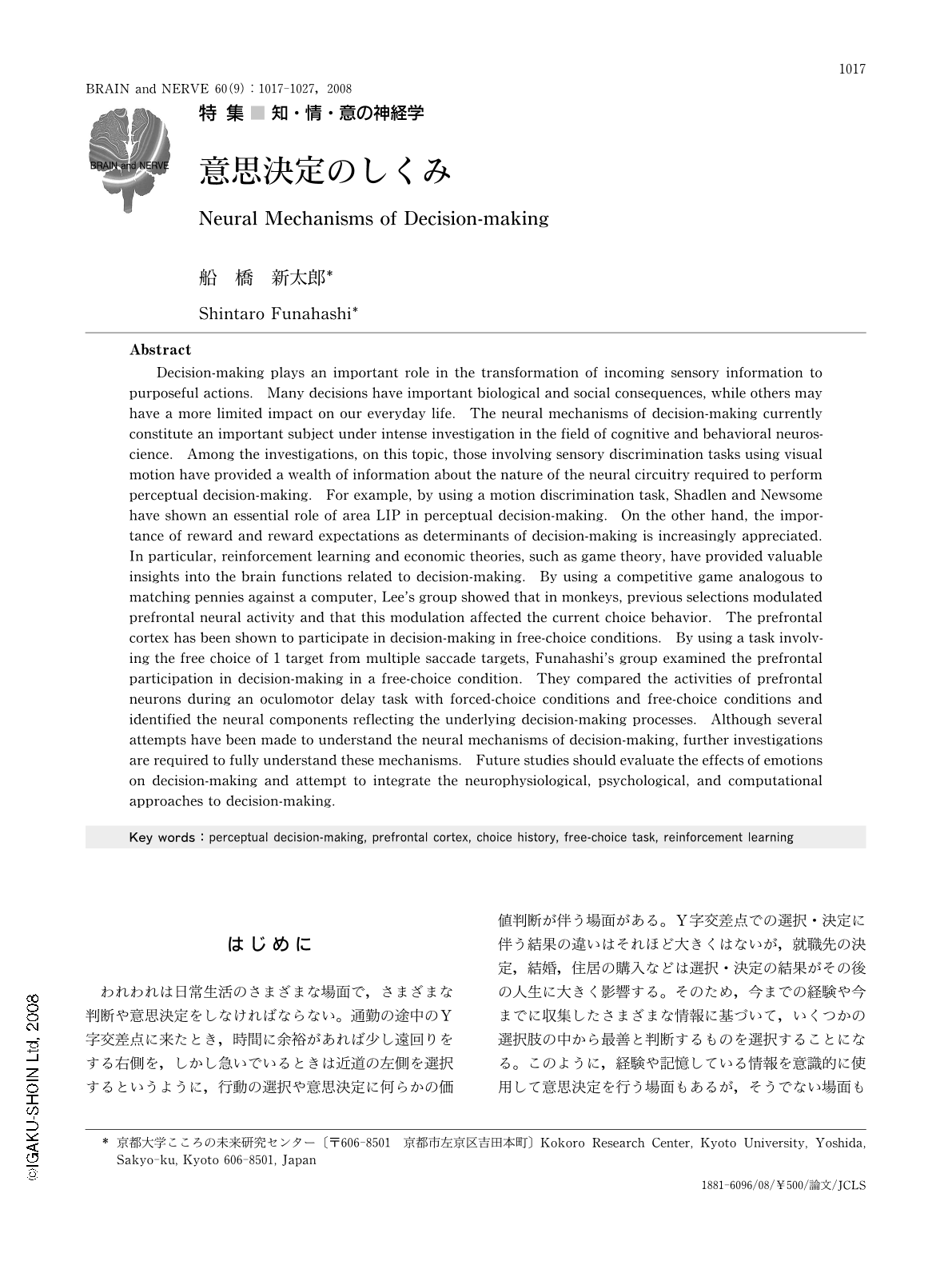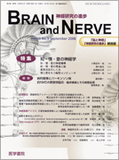Japanese
English
- 有料閲覧
- Abstract 文献概要
- 1ページ目 Look Inside
- 参考文献 Reference
はじめに
われわれは日常生活のさまざまな場面で,さまざまな判断や意思決定をしなければならない。通勤の途中のY字交差点に来たとき,時間に余裕があれば少し遠回りをする右側を,しかし急いでいるときは近道の左側を選択するというように,行動の選択や意思決定に何らかの価値判断が伴う場面がある。Y字交差点での選択・決定に伴う結果の違いはそれほど大きくはないが,就職先の決定,結婚,住居の購入などは選択・決定の結果がその後の人生に大きく影響する。そのため,今までの経験や今までに収集したさまざまな情報に基づいて,いくつかの選択肢の中から最善と判断するものを選択することになる。このように,経験や記憶している情報を意識的に使用して意思決定を行う場面もあるが,そうでない場面も存在する。例えば,初対面でその人に関する情報をまったく持っていなくても,善良かどうか,信用がおけそうかどうか,パートナーとして共に仕事をすることができるかどうか,などを判断して行動に移す。あるいは,複数の選択肢の中のどれを選択してもまったく等価の結果が得られる意思決定場面もある。このような場面でも,結果的にどれか1つを選択する。
意思決定はこのように,複数の選択肢の中から最善の選択を行う情報処理過程であり,基本的な認知的能力やその機能を考えるうえでも重要なテーマであることから,神経科学の分野でも大いに注目され,その神経メカニズムを探るさまざまな研究が実施されている。本稿ではこのようなすべての試みを網羅して解説するのではなく,意思決定に関わる神経メカニズムの解明をテーマに,サルを用いて行われた代表的な試みのいくつかと,筆者らの研究グループで行っている試みを中心に解説する。
Abstract
Decision-making plays an important role in the transformation of incoming sensory information to purposeful actions. Many decisions have important biological and social consequences, while others may have a more limited impact on our everyday life. The neural mechanisms of decision-making currently constitute an important subject under intense investigation in the field of cognitive and behavioral neuroscience. Among the investigations, on this topic, those involving sensory discrimination tasks using visual motion have provided a wealth of information about the nature of the neural circuitry required to perform perceptual decision-making. For example, by using a motion discrimination task, Shadlen and Newsome have shown an essential role of area LIP in perceptual decision-making. On the other hand, the importance of reward and reward expectations as determinants of decision-making is increasingly appreciated. In particular, reinforcement learning and economic theories, such as game theory, have provided valuable insights into the brain functions related to decision-making. By using a competitive game analogous to matching pennies against a computer, Lee's group showed that in monkeys, previous selections modulated prefrontal neural activity and that this modulation affected the current choice behavior. The prefrontal cortex has been shown to participate in decision-making in free-choice conditions. By using a task involving the free choice of 1 target from multiple saccade targets, Funahashi's group examined the prefrontal participation in decision-making in a free-choice condition. They compared the activities of prefrontal neurons during an oculomotor delay task with forced-choice conditions and free-choice conditions and identified the neural components reflecting the underlying decision-making processes. Although several attempts have been made to understand the neural mechanisms of decision-making, further investigations are required to fully understand these mechanisms. Future studies should evaluate the effects of emotions on decision-making and attempt to integrate the neurophysiological, psychological, and computational approaches to decision-making.

Copyright © 2008, Igaku-Shoin Ltd. All rights reserved.


